September 21, 2022
—
In 2018, Hurricane Florence swept through Southeastern North Carolina, leaving a path of destruction that communities are still grappling with. The week-long storm flooded roads, homes, and critical infrastructure, killing 52 people and upending thousands of lives.
Though much of the storm’s worst impacts have since been addressed, the road to recovery has still been long for many. But Florence has also given the region an opportunity to build back with flood resilience in mind.
Last year’s state budget, which included a comprehensive strategy to address flooding, reflects this mindset: The American Flood Coalition worked with state lawmakers on the budget, which became the largest investment in flood resilience in state history, with $800 million for disaster-related programs and projects.
On Thursday, the American Flood Coalition coordinated the Southeastern North Carolina Resilience Tour, a five-hour bus tour to highlight some of these achievements in flood resilience after Florence, as well as the work that’s left to do. The tour stopped at five sites in the Wilmington area, with presentations from local leaders and state officials between stops.
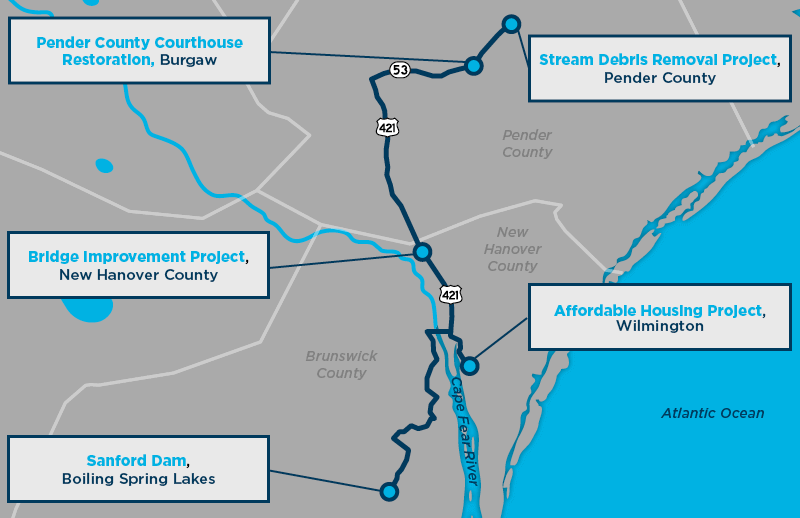
“Since Hurricane Florence, the state has made resilience a priority, as seen in sweeping infrastructure projects and improvements, all of which will help communities better prepare for and recover from extreme weather,” said AFC Carolinas Director Tony McEwen. “Certainly there is more work to be done, but North Carolina is taking the necessary steps to protect life and property from increased risk from flooding.”
For the tour, the American Flood Coalition brought together local and state leaders, with attendees including four mayors, three county commissioners, and over a dozen representatives from key state agencies. Also attending were the state’s chief resilience officer, as well as representatives from the offices of North Carolina Majority Leader John Bell and Senator Thom Tillis, among others.
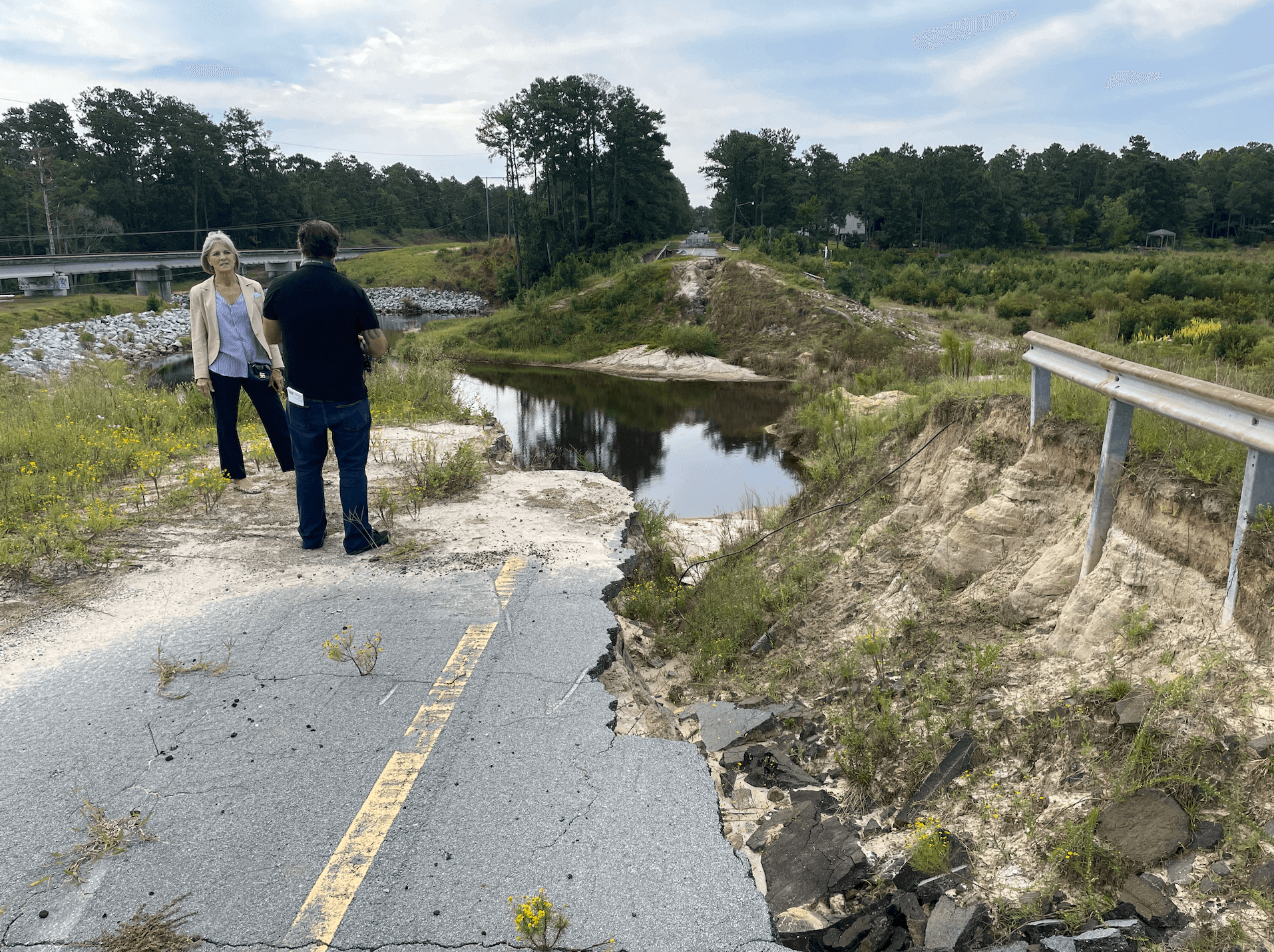
The first stop on the tour was Boiling Spring Lakes, where Florence overtopped and destroyed a dam, cratering a road and draining a massive reservoir that still remains empty. Since Florence, the city of Boiling Spring Lakes, which has less than 6,000 residents, has worked with state agencies and Brunswick County to secure millions in funding and has applied for millions more to restore the dam.
“It’s been a long time coming, but we are ready for our lakes to come back, we’re ready for our way of life to come back,” said Jeff Winecoff, mayor of Boiling Spring Lakes.
The tour then went to Wilmington to see a bridge site and an affordable housing site. During and after Hurricane Florence, roads were flooded, preventing people from getting to and from work, as well as to emergency services like hospitals and fire stations.
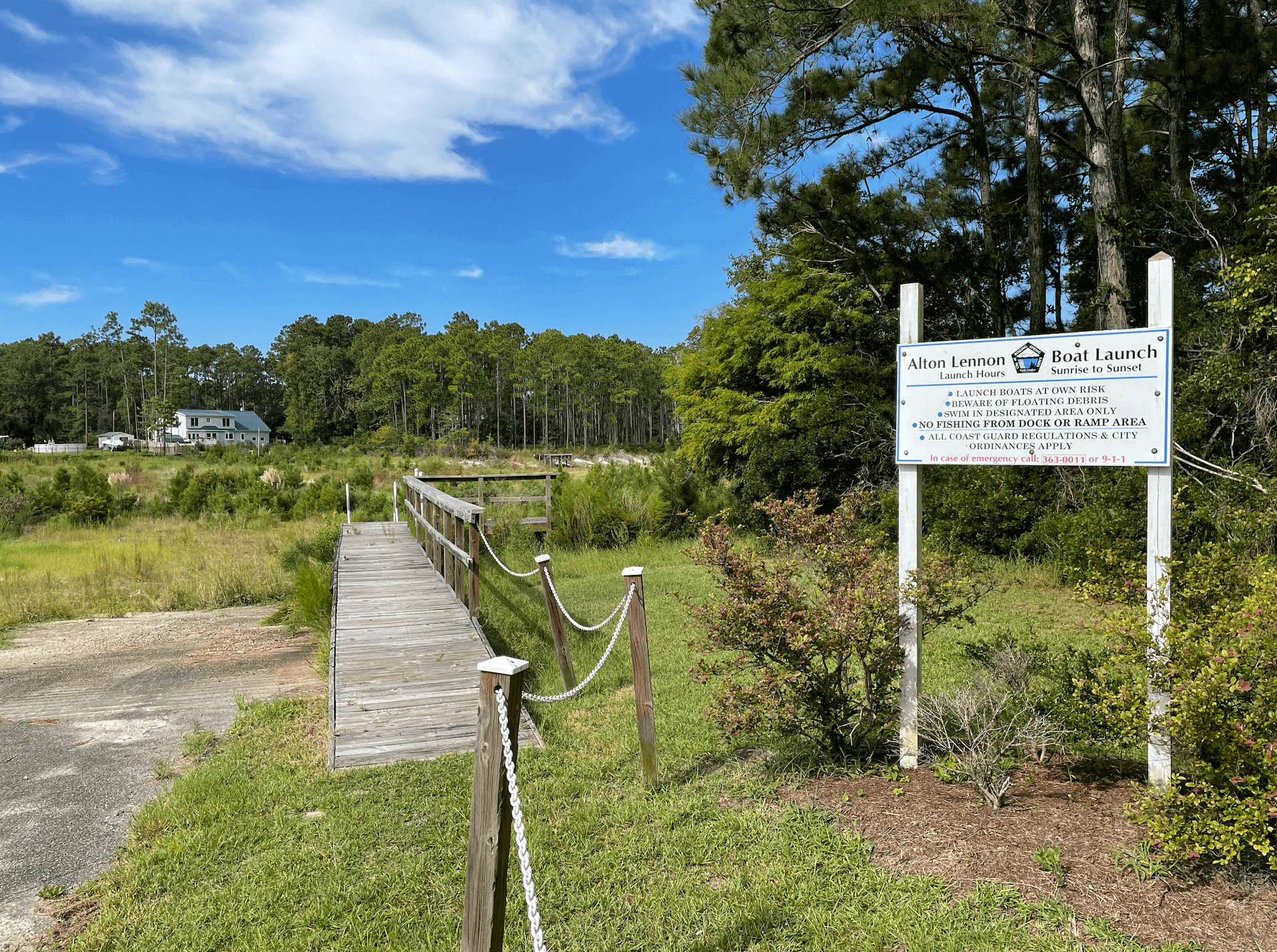
One such road was US 421, which was torn up by Hurricane Florence in 2018. The road has since been repaired and converted into a bridge by the North Carolina Department of Transportation.
But it wasn’t just infrastructure that was damaged. Wilmington also lost 1,200 rental units after Florence, according to Tracy Colores, community development director at the North Carolina Office of Recovery and Resiliency (NCORR). With less rental properties in place, rents rose, pricing people out of the market.
To tackle this shortage, NCORR has dedicated funds from the U.S. Department of Housing and Urban Development to affordable housing in areas most affected by the storm. One such potential site is Starway Village in Wilmington, where NCORR is hoping to develop a project with 270 affordable housing units.

For lunch, attendees heard speakers at the Burgaw Community House. Burgaw, a town of about 4,000, is roughly 30 minutes north of Wilmington. During Florence, the Pender County Courthouse, sitting at the center of the town, took on significant water and closed for several years.
With funding from the Golden Leaf Foundation and state agencies, the courthouse has since reopened and is more resilient, the topic of a presentation from Allen Van, assistant county manager for Pender County.
The tour ended at a stream debris removal project near Burgaw, one of many projects conducted after Florence by the North Carolina Department of Agriculture and Consumer Services. This project removed debris from about eight miles of stream, an effort that essentially unclogged the stream so that flood water has somewhere to go during an extreme weather event.
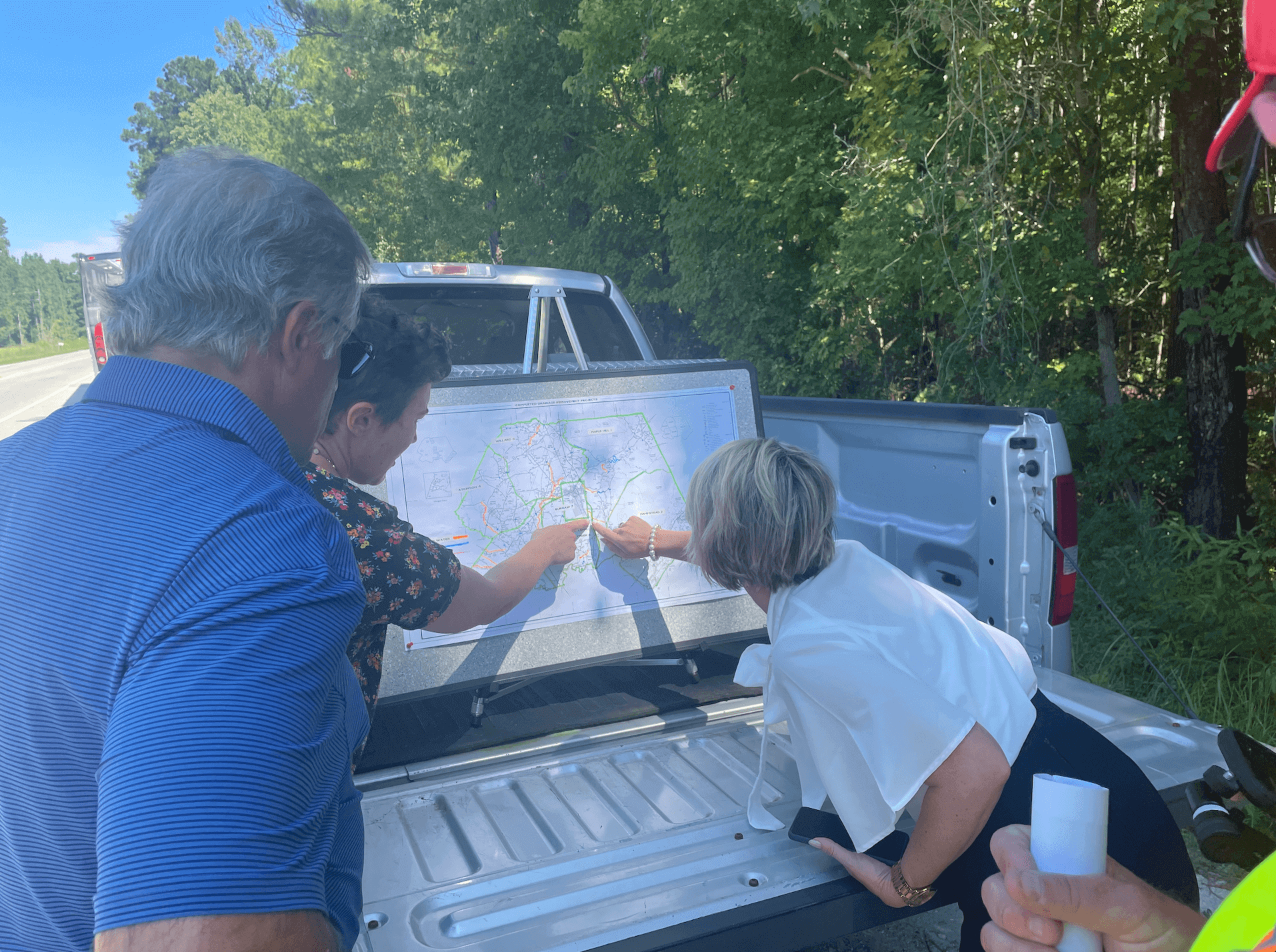
Since Hurricane Matthew in 2016, the department has reimbursed local sponsors $36 million in stream debris and repair for 3,200 miles of streams, primarily in Eastern North Carolina, and has leveraged that money to bring in an additional $35 million in federal funds from USDA, said Vernon Cox, director of the Division of Soil and Water Conservation at the NC Department of Agriculture and Consumer Services.
“[A lot of these projects] aren’t going to solve a 36-inch rainfall event, but they can address chronic rainfall [damage] and chronic flooding that many of these areas are experiencing,” said Cox.
Four years on, communities are still recovering from Florence. But with the recent investment from the state budget, as well as ongoing resilience projects throughout the region, they’re in a better position for the next storm.
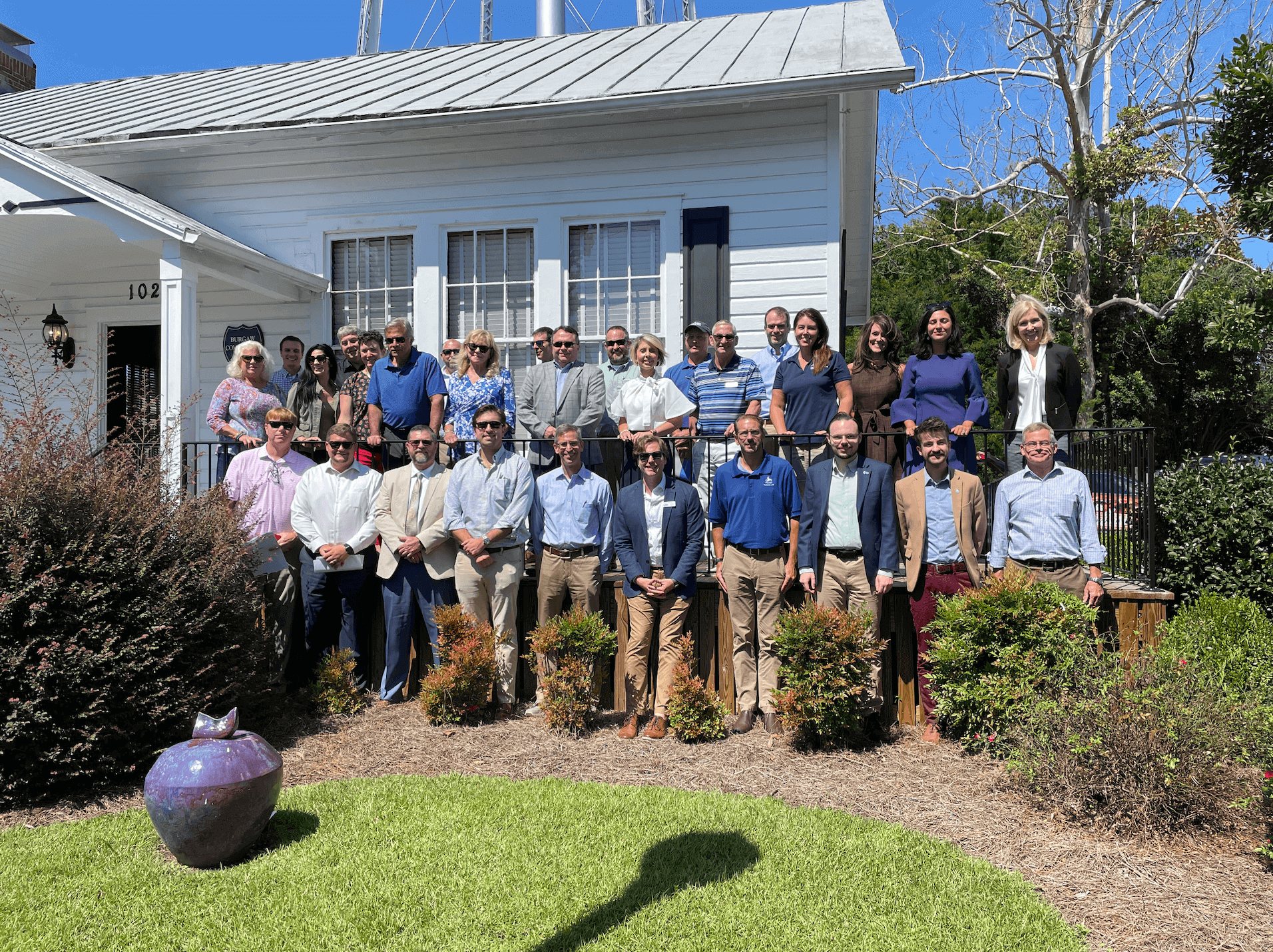
By bringing together dozens of decision makers from city, county, state, and federal levels, AFC’s Southeastern North Carolina Resilience Tour complemented these efforts and allowed decision makers to collaborate and learn from each other on flood problems and solutions.
“It’s a challenge for all of us, and it’s a challenge that we’ll all have to partake in and resolve,” said Jackie Newton, Pender County commissioner and AFC member. “Resiliency is important, not just when a storm hits but to make ourselves better able to avoid and avert catastrophes that cause damage, loss of life, and set people back financially.”
—
This post was authored by Brandon Pytel, Communications Associate, American Flood Coalition.




